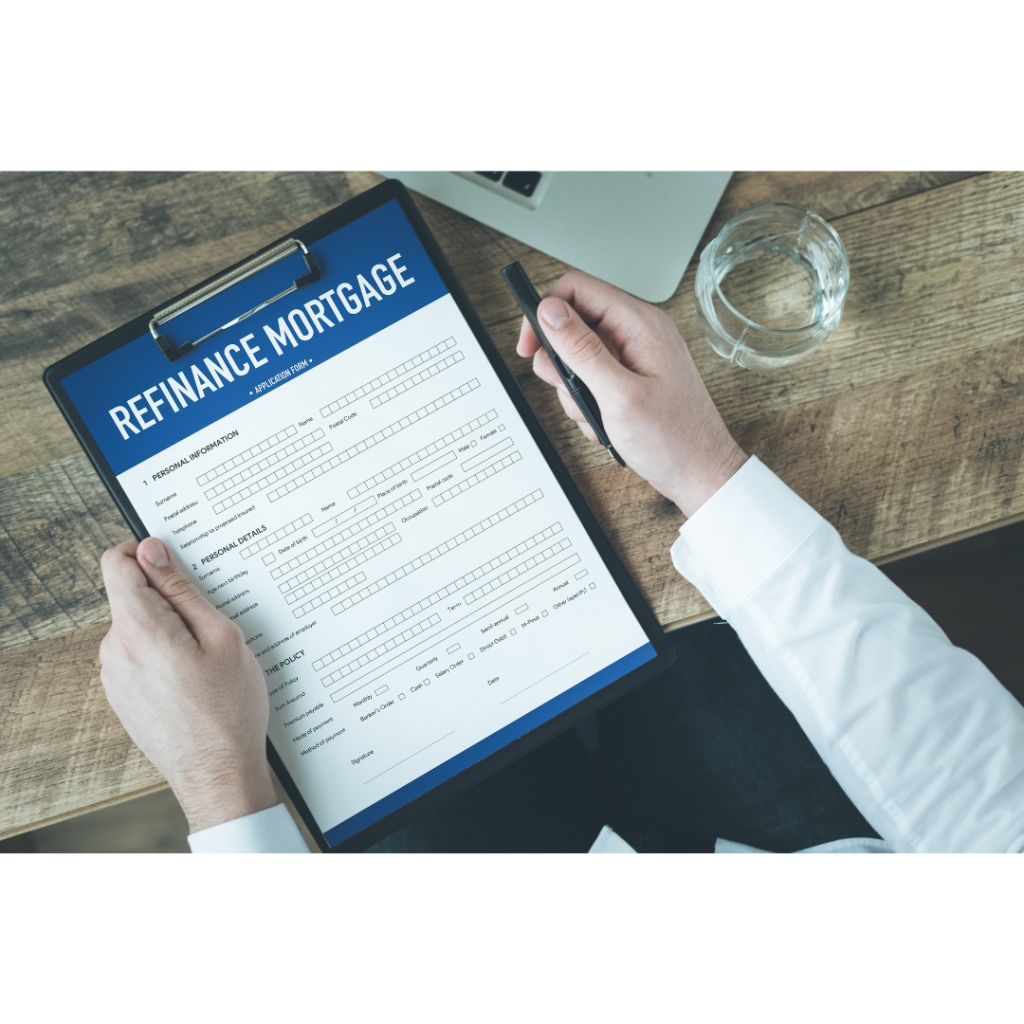How do I get the most cash out when refinancing my investment property?
September 22, 2022When should I Refinance My apartment building?
September 22, 2022- Does Refinancing after Buying a House Affect Your Credit Score?
- How can refinancing help?
- How long do I have to wait to refinance after buying property cash?
- How soon can you refinance a home after purchase?
- Is Refinancing Worth It?
- Refinancing Options
- Rules for refinancing conventional loans
- Rules for refinancing FHA loans
- Rules for refinancing jumbo loans
- Rules for refinancing USDA loans
- Rules for refinancing VA loans
- What does refinancing mean?
- When is it wise to refinance right away after purchasing a home?
Home equity is a huge source of wealth, which most people can’t access without a mortgage. However, if you recently closed on your house and are unhappy with the conditions of your existing mortgage, you’re probably looking for a solution.
The good news is that getting a better mortgage doesn’t require waiting. Read on to learn about the right actions to undertake if you’re unsure how soon you can refinance after purchasing a home.

What does refinancing mean?
Simply put, refinancing means switching out your old mortgage for a new one. The stipulations of your new mortgage will depend on the refinancing you pick. Here’s why refinancing might be something you should consider even if you currently have a good rate:
- You aim to lower your monthly payments by using a longer loan term or a lower interest rate (or both)
- You want to shorten the terms of your mortgage to pay it off sooner.
- After reevaluating your situation, you want to switch from having an adjustable-rate mortgage (ARM) to a fixed-rate mortgage.
- You must access your home equity for upcoming expenses like home improvements or a large buy.
- You wish to cancel the private mortgage insurance (PMI) that was included with your first loan.
- You wish to add or remove someone from the loan since you got married or divorced since taking out the loan.
Refinancing Options
Rate-and-term change
With this kind of refinancing, homeowners can change the terms of their mortgage to more benign ones. In this case, the homeowner is not given any more funds; instead, the interest rate, loan duration, or both are adjusted. This is a particularly good alternative for homeowners who cannot make their present mortgage payments or who wish to benefit from lower interest rates.
Cash-out refinance
A cash-out refinance is a good option for you if you want to access the equity in your house without selling or getting a second mortgage.
A cash-out refinance pays off your former mortgage and replaces it with a new one. However, the homeowner takes out a new mortgage for a higher amount than they still owe on their old one, unlike a rate and term change. The homeowner is then given a cash advance from this debt to improve their home or other needs.
How can refinancing help?
Refinancing is helpful for homeowners who want to manage their debt and make the most of their biggest assets. Here are a few advantages of refinancing:
Lower your interest rate: By committing to a lower interest rate, you might be able to reduce your monthly mortgage payments. Historically, lenders have advised refinancing to homeowners who can drop their interest rates by at least 2%, but others advocate it even if you can do so by just 1%. Use a mortgage calculator to see whether the current interest rates are advantageous.
Use your home equity: Homeowners can use the equity in their property to obtain a cash advance from their lender with a cash-out refinance. For an estimate of the amount of equity that may be trapped in your home, use a home sale calculator.
Shorten your loan’s term: Some homeowners may be able to convert their 30-year mortgage to a 15-year one through refinancing. Reduce the term of your loan if interest rates have fallen significantly or if you can afford a greater monthly payment to hasten your journey to a debt-free ownership.

When is it wise to refinance right away after purchasing a home?
Following the acquisition of your initial mortgage, refinancing can be done for several reasons:
To lower your monthly payments: A new loan with a longer payback period may lower your monthly payment amount, albeit doing so usually means paying more throughout the loan.
To get rid of mortgage insurance: If you put less than 20% of the loan amount down at closing, conventional mortgages normally need private mortgage insurance (PMI), and some government-backed loans require a monthly mortgage insurance charge (MIP) until you put down at least 10%. You might save money by refinancing without mortgage insurance if the market value of your property has grown quickly or if you have more money to put down on a new loan.
To change your interest rate: The total amount you will pay throughout the loan can be decreased by switching from your existing mortgage to one with a lower interest rate. Similarly, switching from an annual payment-changing variable-rate loan to a more stable fixed-rate loan can save money and make budgeting and other financial planning easier.
To get cash: You can use a cash-out loan, which combines a new mortgage and a loan secured by your home equity, for whatever objective you want, including home repair projects. However, you should be aware that to qualify for a cash-out refinance, your home equity must typically be greater than 20%. As a result, unless you made a sizable down payment on your initial mortgage or your home’s market value increased significantly (and quickly), you might not have enough equity after only six months.
To add or remove a cosigner: If you and another person (such as your husband) filed for your initial mortgage jointly and you want that person to be dropped from the loan (in the event of a divorce, for example), you must refinance under your name or apply jointly with another person. On the other hand, refinancing will enable you to reapply with a joint signer if you originally secured your mortgage based on your credit and income and choose to do so.
Is Refinancing Worth It?
When done properly, mortgage refinancing can save you money, but receiving better loan terms quickly after your initial mortgage necessitates a confluence of favorable circumstances:
You have a co-borrower with strong credit: If you’re applying for a new mortgage with a co-borrower (like your spouse), including their income and credit history may allow you to qualify for a reduced interest rate if their credit history is strong.
Prevailing interest rates have fallen: New loans may be significantly more affordable than those on your current mortgage due to a large decline in market rates. This is not the case given the state of the market, where the Federal Reserve has raised institutional lending rates to fight inflation and where further increases are anticipated in the coming months.
Your credit improved significantly: You may be eligible for a new loan with a lower interest rate if a significant negative entry, such as a bankruptcy or foreclosure, has “fallen off” your credit reports (which typically occurs after seven years) or if you’ve paid down a sizeable amount of revolving debt leading to noticeably higher credit scores.
On a new loan, you can raise the required down payment: For example, you might be able to obtain a new loan with a reduced interest rate and closing expenses if you recently sold an asset, got an inheritance, or otherwise obtained access to the cash you can use to put down a lot more money than you did on your initial mortgage.
Refinancing a mortgage may also have disadvantages, particularly if not much time has gone since you obtained your present mortgage. These consist of:
Prepayment penalties: If you refinance your loan or sell your house within the first three to five years of your repayment period, certain mortgage contracts impose a hefty balloon payment. Make careful to consider these if they pertain to your current mortgage.
Closing costs: Like any other mortgage, a refinance loan normally has closing costs of 2% to 5% of the loan amount. That amounts to between $6,000 and $15,000 on a $300,000 mortgage, which you must either pay upfront or finance the loan at the same interest rate used for the house.
Other cost trade-offs: Make sure you aren’t simply substituting one set of expenditures for another if your objective in refinancing your mortgage is to save money. Make sure your new loan doesn’t demand mortgage insurance, for example, if you’re refinancing a government-backed loan to avoid paying a mortgage insurance payment.

How soon can you refinance a home after purchase?
We would say as early as possible, depending on the refinance program you’re looking for, the loan type, or whether any penalties apply.
Refinancing quickly after going through the procedure and paying closing costs for your initial mortgage may seem silly.
Still, it could save you significant money for the loan in some circumstances.
Even though you can potentially refinance right away, certain lenders may insist that you wait several months before doing so. Here are some guidelines and deadlines for mortgage refinancing.
Rules for refinancing conventional loans
If the Federal Housing Administration doesn’t guarantee your loan, the U.S. Department of Veterans Affairs, or the U.S. Department of Agriculture, you most likely have a conventional mortgage if it isn’t a jumbo loan. A conventional mortgage satisfies the requirements established by Freddie Mac and Fannie Mae.
Typically, you can refinance a conventional loan whenever you choose. Before refinancing with the same lender, you might have to wait six months. You can still refinance with a different lender despite that.
Refinances with cash out are an exception. Unless you inherited the property or received it as part of a divorce, separation, or dissolution of a domestic partnership, you must have owned the home for at least six months to qualify for a cash-out refinance on a conventional mortgage.
Rules for refinancing FHA loans
A mortgage insured by the Federal Housing Administration is known as an FHA loan. The FHA offers several refinance options, each with specific guidelines.
You might consider an FHA cash-out refinance if you wish to borrow more money than you owe and take the difference as cash.
You can choose an FHA rate and term refinance or an FHA simple refinance if you don’t want to take any cash out and are willing to get (and pay for) an appraisal.
An FHA streamline refinance may be the right option if you currently have an FHA loan and wish to refinance into another FHA loan without getting an appraisal.
Cash-out: Before applying for a cash-out refinance, you must have owned and lived in the property as your primary residence for at least a year. You can refinance a home that you own outright with cash. If you do, you must have owned your mortgage for at least six months. The last twelve months’ mortgage payments must have all been made on time.
Rate and term and simple refinance: You must wait at least seven months, or long enough, to make six monthly payments before refinancing. You can only have one late payment (30 days or more late) in the six months before that, and you must have made all mortgage payments due in the previous six months on time.
FHA streamline: Because an appraisal is unnecessary, an FHA streamlined refinance is a quicker and less complicated alternative to switching between FHA loans. At least six monthly payments must have been made, and you must have had the mortgage for at least 210 days. You can only have one late payment (30 days or more late) in the preceding six months if your payments for the previous six months were all made on time.

Rules for refinancing VA loans
You must wait for at least 210 days or six payments, whichever is longer, to refinance into a VA loan, a mortgage backed by the Department of Veterans Affairs. You must meet this requirement whether you’re applying for a VA Interest Rate Reduction Refinance Loan, also known as an IRRRL, or a VA Cash-Out Refinance.
Rules for refinancing USDA loans
The U.S. Department of Agriculture offers two mortgage programs for buyers of rural homes: guaranteed loans and direct loans. You must have owned your mortgage for at least a year to refinance a guaranteed loan. There is no waiting period for refinancing direct loans.
According to the USDA, there are three ways to refinance into another USDA loan. First, you must have made timely payments over the previous 180 days to qualify for a streamlined or non-streamlined refinance. To qualify for the simplified assistance program, you must have made your mortgage payments on time throughout the previous 12 months.
Rules for refinancing jumbo loans
In most circumstances, you can refinance a jumbo mortgage whenever you choose, just like conventional loans. However, jumbo loans have larger loan amounts than those allowed by Fannie Mae and Freddie Mac, and lenders typically have higher underwriting guidelines than normal loans.
How long are you planning to stay in your home?
By responding to this question, you can decide whether refinancing makes financial sense. Like your initial mortgage, refinancing involves closing charges ranging from 2% to 5% of the loan value and includes an appraisal, an inspection, and closing costs. Are you going to stay in the house long enough to recoup those costs?
Let’s examine a fictitious scenario: Let’s say that you are considering refinancing even if your monthly mortgage payment is $1500. Your monthly payment is anticipated to decrease by $200 per month despite closing charges and other fees totaling an estimated $4800. You wouldn’t begin to realize substantial savings with a $2400 annual investment until two years had passed.
Do you plan to occupy your residence for at least that long? If yes, then it might make sense to refinance. On the other hand, your potential savings might not be enough to offset the expense of refinancing if you don’t intend to stay in the same place for more than a few years. Your math will be different, of course.
If the moment is right, refinancing is worthwhile. It may also be a simple, straightforward process if you work with a knowledgeable loan officer from Aurum and Sharpe. They help develop tailored loan solutions that will suit your financial state.

Does Refinancing after Buying a House Affect Your Credit Score?
Your credit scores are impacted by refinancing a mortgage, and doing so soon after taking out your initial mortgage might strengthen the effect.
A hard inquiry, a credit check that happens when you apply for a mortgage refinance, can cause a small drop in your credit ratings. Then, after accepting the loan, your scores can experience a minor further decrease.
A quick refinance after receiving a mortgage can result in a cumulative decline in credit scores. In general, your credit scores recover from the hit brought on by your initial mortgage application within a few months. However, if you apply for another mortgage during that time, it’s possible that they won’t have had enough time to recover fully, and the new application process will probably make them worse.
Typically, only a few points are lost due to adding new credit. Still, depending on your starting score, they may make lenders consider your second application less favorably than your first and result in less favorable loan terms.
Conclusion
Now that you know when you can refinance, make sure you do it for a good cause. Many refinance to achieve a cheaper mortgage interest rate and smaller monthly payments. Refinancing quickly after getting a mortgage can help you save money, but before doing so, you should consider both the expenses and possible savings of a new loan. You should approach the refinancing process as you would when applying for a new mortgage because your credit scores impact it. To know where you stand, check your credit ratings before and during the procedure. If necessary, consider taking a few months to improve your credit profile before starting the refinancing process.
Mortgage Rates
DSCR Mortgage: 7.375%
Commercial Mortgage: 7.5%
Single family, Condo Investment Property: 7.375%
Portfolio of Residential Homes: 7.5%
Calculate Your Monthly Payment
Mortgage Information
Monthly Payment
Principal and Interest: $0
Total Monthly Payment: $0


